Our next destination was one of the world's most isolated inhabited islands, originally know to the locals as Te Pito o Te Henua, meaning navel of the world or the ends of
the land. Today it’s known as Rapa Nui (Polynesian), Isla de Pascua (Spanish) or Easter Island.
Almost everything about the island and it’s history is contentious, including when settlers first arrived. Local oral tradition supported by scientific consensus
suggests that they arrived from South East Asia via Polynesia rather than from South America. However, in 1888 despite lying 3,510 km (2,180 m) west of the mainland it was annexed by Chile, which means that we can visit it
as part of the South American leg of our trip :)
When you mention Easter Island, one image immediately comes to mind, that of the large stone statues or Moai. Like the island itself much of the Moai’s history is unknown
and under great debate so we set about trying to discover more about them for ourselves.
After checking into a hotel we went for a walk about the only town on the island Hanga Roa and got to see our first Moai up close, that of Ahu Ko Peka Ta’e Ati, after we
almost immediately stumbled across it.

The next day we set out to explore more of the island. We had decided that as the island wasn’t very big, we would use our hiking skills to get ourselves around. In chilly
Santiago this had seemed like a good plan, however now deep in the South Pacific with heat and humidity it quickly became apparent that this wasn’t going to be a viable option, so we quickly found an alternative.....
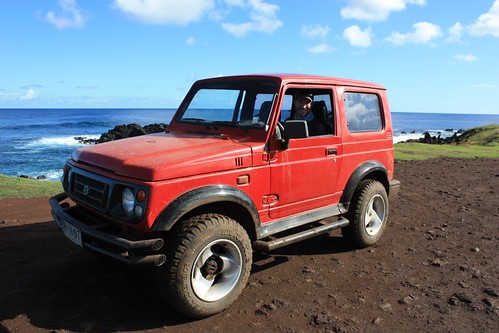
It was rusty, rattled, didn’t lock and the key even fell out of the ignition when driving, but it did the job and allowed us to visit some of the distant sights on the island.
Having not owned or driven a car for over 5 years, it took a while to get used to everything, especially as i’d never driven a left hand drive manual before.
When the island was discovered by Europeans in the 17th century all of the Moai had been toppled as a result of tribal warfare

Only a few sites on the island have been restored and our first of those was around Ana Kena beach, to see Ahu Nau Nau the first Moai's to be reerected.

Our next stop was Ahu Tongariki the largest and perhaps most well known of the ceremonial platforms and burials called Ahu on which the Moai sit. After being raised they were
again felled by a tsunami in 1960, before being restored to their current positions in the early 1990’s
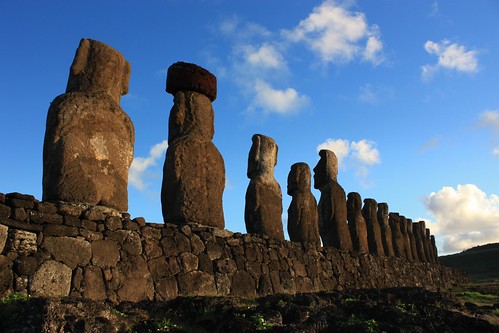
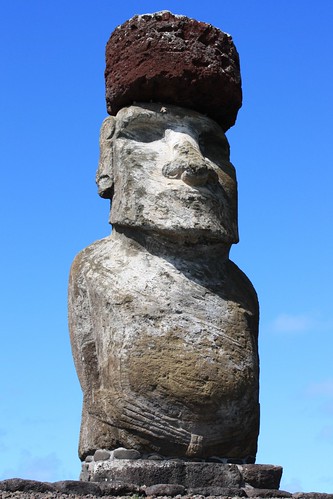

Which also look very enchanting at sunrise.


The island of Rapa Nui was formed by 3 volcanos and almost 95% of the Moai were carved out of the volcanic rock at Rano Raraku. It is not yet known how the Moai were transported
to their Ahu, but nearly half the Moai remain in the quarry at the volcano and only a quarter made it to their intended sites, while the other quarter were on their way to but never made it to their final locations.
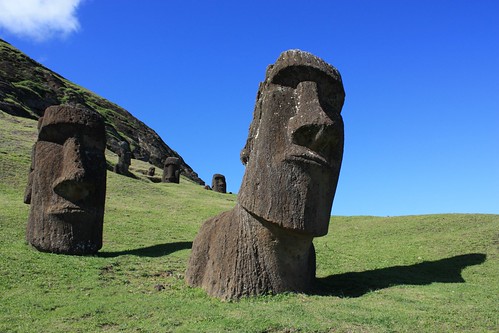
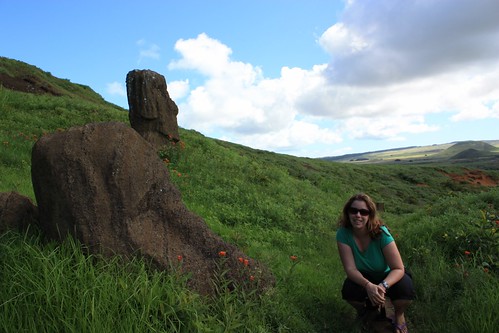
For centuries, the religious belief of worshipping ancestors was the focus of life for the islanders, which manifested itself in the building of Ahu and the carving of Moai.
Each Moai is believed to be a depiction of an ancestor or deceased line of lineage. Each Ahu and Moai are oriented astronomically, with all the Moai facing inland with the exception of those at Aku Akivi which face out to
sea.

The eye sockets of the Moai were not completely carved out until they were erected on their Ahu. During ceremonies the "eyes" were placed on the statues and today
only one example of this remains at Ahu Ko Te Riku

But Rapa Nui is not just about the Moai. During the 16th Century islanders adopted the cult of the Make-Make god, resulting in an annual ceremony called Tangata Manu or ‘Birdman’,
which was a leadership competition to obtain the first egg of a sooty tern from an islet off the coast, with the winner becoming the chief of the cult for that year. It’s believed along with tribal warfare between the 10
or so tribes on the island, that the changing of religious beliefs and the cult of the ‘Birdman’ led to the toppling of all the Moai from their Ahu. The main area for this worship was on the Rano Kau volcano, with the Orongo
village on it’s slopes being used for the ceremony along with being decorated by Petroglyphs.

Like with many national parks there are rules on how to treat the attractions, along with not touching the Moai and petroglyphs and not walking on the Ahu, we were told to
respect the Moai. I’m not sure if this counts as disrespecting them but like other visitors we couldn’t resist an imitation pose.
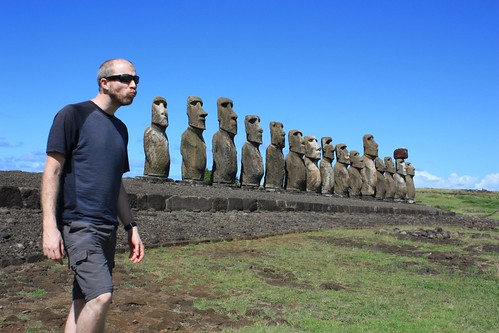
Although i’m not sure that either of us could have achieved surfing on a Moai even if we had wanted to.
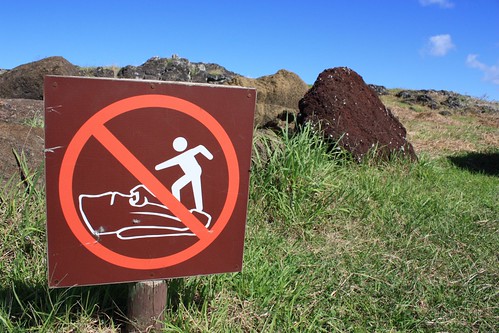
We wondered whether as ‘budget’ travellers we should come, but if you’re thinking about it we would definitely recommend it. The island with it’s beautiful flora,
crystal clear surf and horses roaming freely has the South Pacific feel we were looking for, something completely different to mainland South America.

Despite almost everybody on the island making a living through tourism the island didn’t feel ‘touristy’. Only one plane lands each day keeping the quota of tourists
at around 300. There is a certain relaxed detachment about the island and it’s inhabitants, who like elsewhere, love their soccer and a local brew. There is a real sense of community about the island, which we were made to
feel part of during our stay.


While the debate still rages about the history of the island and it’s Moai, what can’t be disputed is that both are spellbinding.
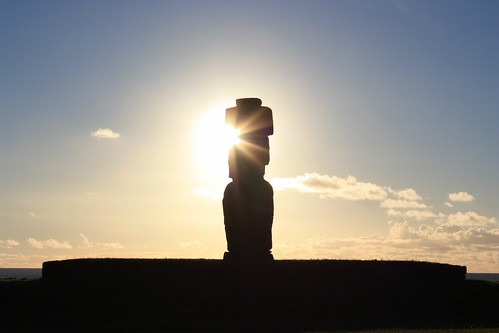
So now we're returning to Santiago, before crossing back into Argentina.
Until next time
Ryan y Jo
Photos: http://www.flickr.com/photos/dojo77/sets/72157623966716518/
Chile Country Summary
Highlights
Favourite Place - Easter Island (Both)
Favourite Attraction - Santa Lucia Park (Jo) Torres Del Paine (Ryan)
Food - Mashed potato with mustard chicken (Jo) Lomito (Ryan)
Beer - Rapa Nui Pale Ale (Both)
Lowlights
Valparaiso (Both)
For those of you thinking of possibly travelling to the region: Costs in USD
Accommodation - $30-40 room in hostel
Restaurant meal - $6-12
1L Bottled Beer - $2
500ml Soft Drink - $1
Bus - $4 / hour